A pulley fixed to the ceiling of an elevator car carries a thread whose ends are attached to the masses . The car starts going up with an acceleration . Assuming the masses of the pulley and the thread as well as the friction to be negligible, find:

(a) the acceleration of the load relative to the elevator shaft and relative to the car
(b) the force exerted by the pulley on the ceiling of the car. Given .
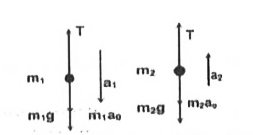
(a) The elevator is an accelerated frame which is non-inertial, pseudo force have been taken into consideration for , respectively.
Solving the above equations, we get,
This is the acceleration of w.r.t., car.
(b) Acceleration of the mass w.r.t. the elevator shaft
Force exerted by the pulley on the ceiling of the car
Similar Questions
A pulley fixed to the ceiling carried a thread with bodies of masses m1 and m2 attached to its ends. The mases of the pulley and the thread are negligible and friction is absent. Find the acceleration of the centre of mass of this system.
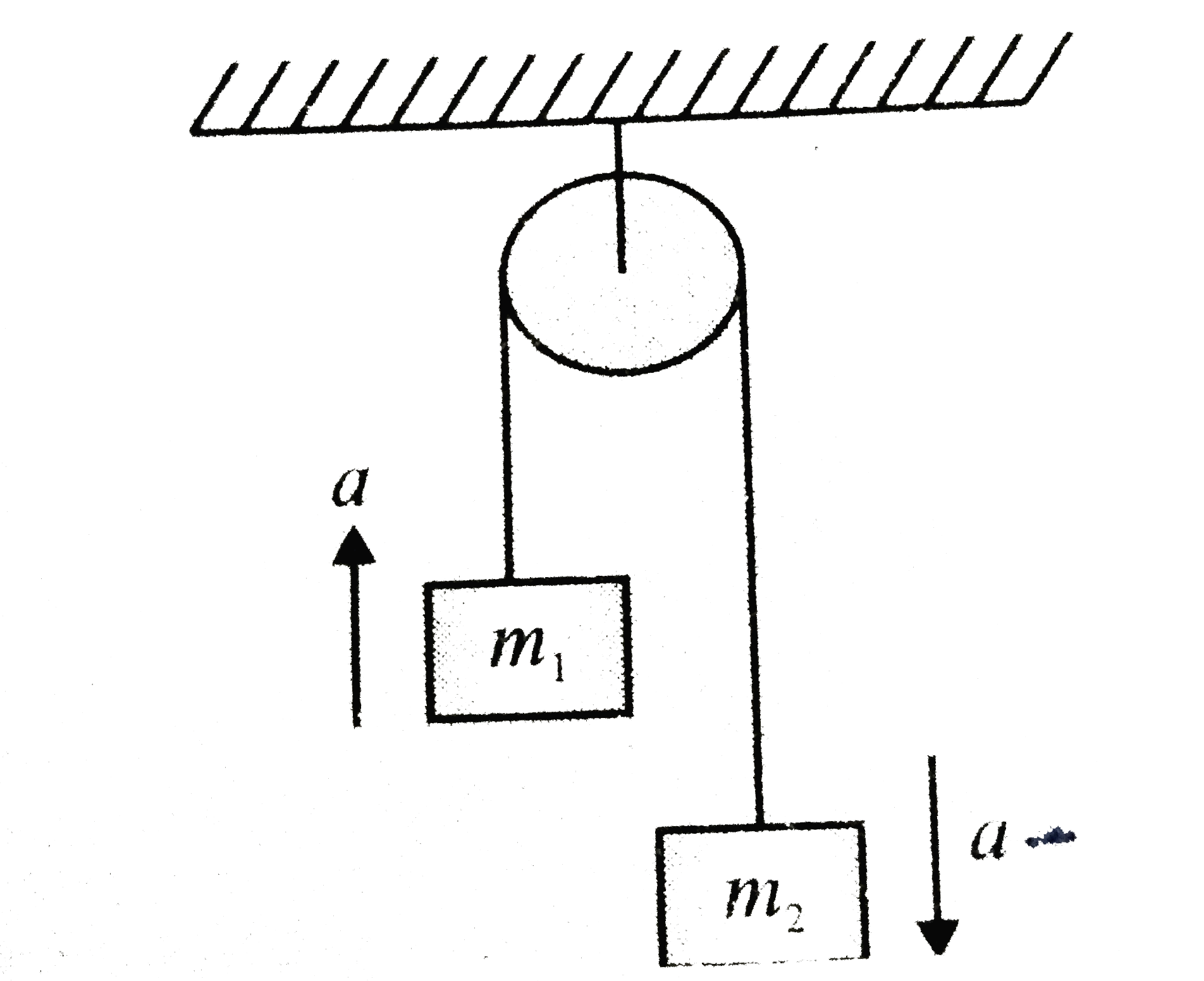 View Solution
View SolutionTwo bodies with masses m1 and m2(m1>m2) are joined by a string passing over fixed pulley. Assume masses of the pulley and thread negligible. Then the acceleration of the centre of mass of the system (m1+m2) is
View SolutionA block of mass m is arranged on the wedge as shown in figure . The wedge angle is θ. If the masses of pulley and thread and negligible and friction is absent , find the acceleration of the wedge
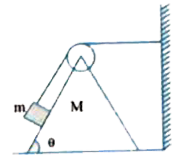 View Solution
View SolutionIn the arrangement shown in figure the masses of the wedge M and the body m are known. The appreciable friction exists only between the wedge and the body m, the friction coefficient being equal to k. The masses of the pulley and the thread are negligible. Find the acceleration of the body m relative to the horizontal surface on which the wedge slides.
 View Solution
View Solution(1) Find the acceleration of centre of mass of the system shown.
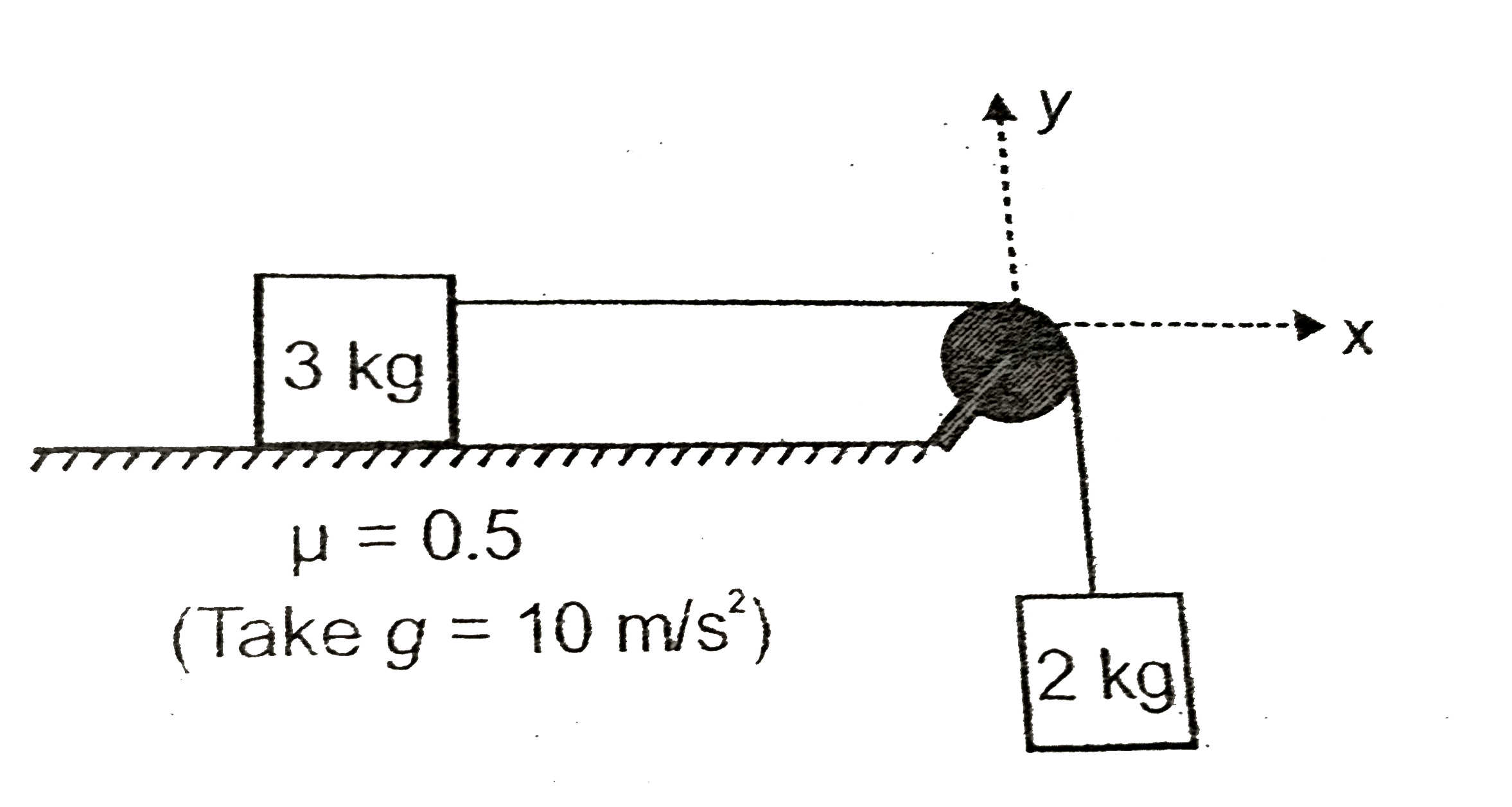
(ii) Find the normal reaction applied by the pulley on the thread.View SolutionFind the acceleration of the body of mass m2 in the arrangement shown in figure. If the massm2 is η time the mass m1 and the angle that the inclined plane forms with the horizontal is equal to θ. The masses of the pulley and threads, as well as the friction, are assumed to be negligible.
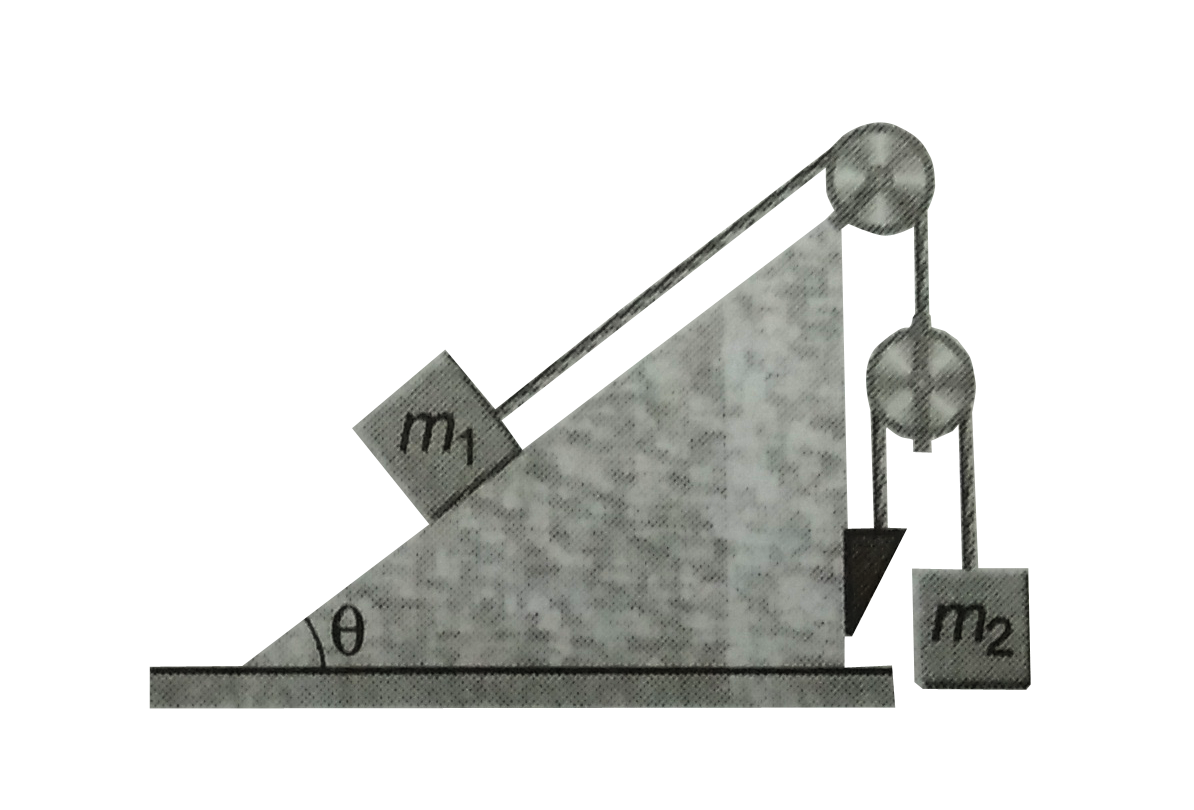 View Solution
View SolutionIf the pulley is massles and moves with an upward acceleration a0. Find the acceleration of (m1)and(m2) w.r.t to elevator.
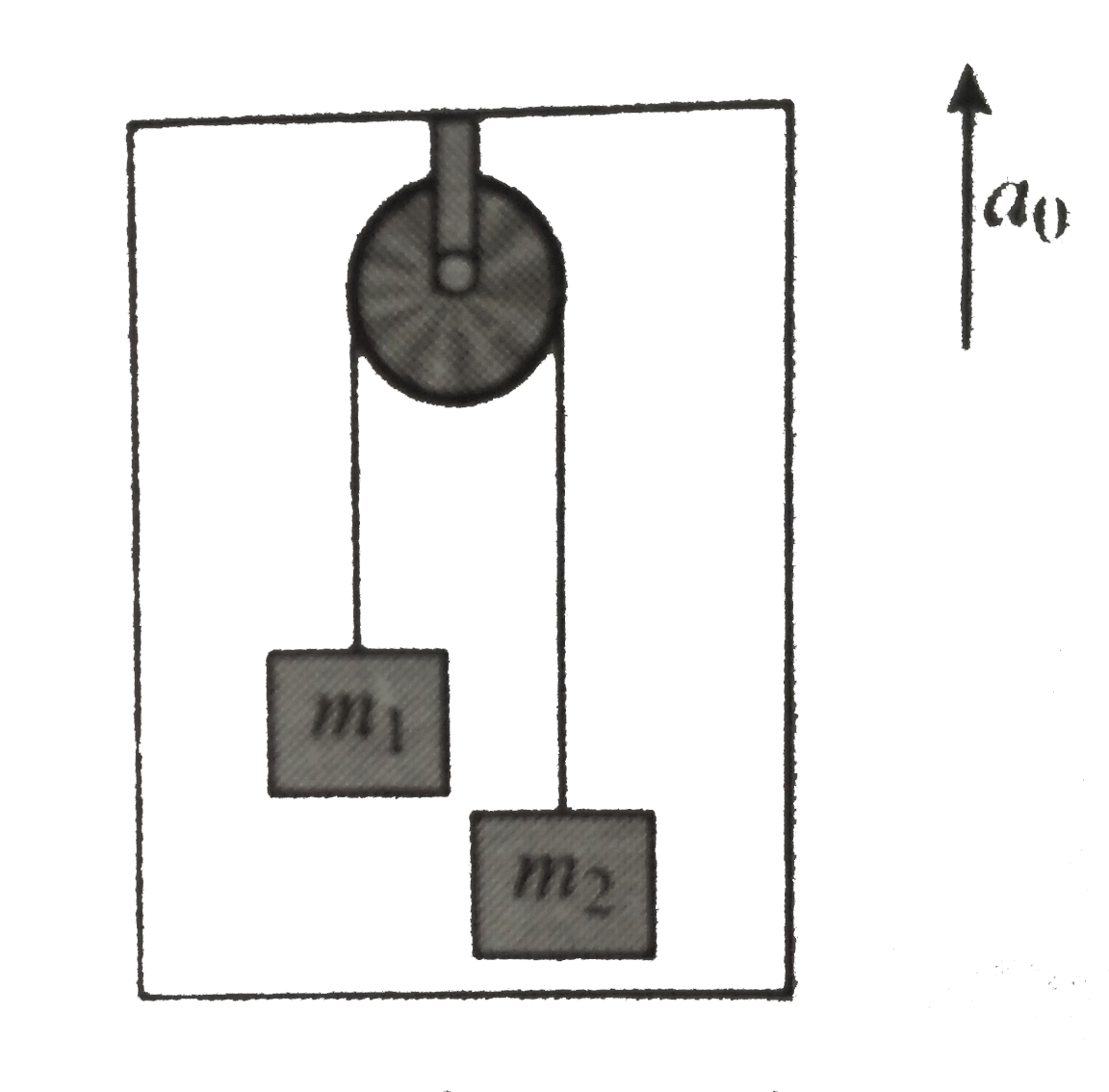 View Solution
View SolutionA pulley is connected to the ceiling of an elevator by a massless rod. Two masses are connected as shown in figure. There is sufficient friction in the pulley axis. The acceleration of block w.r.t. earth is
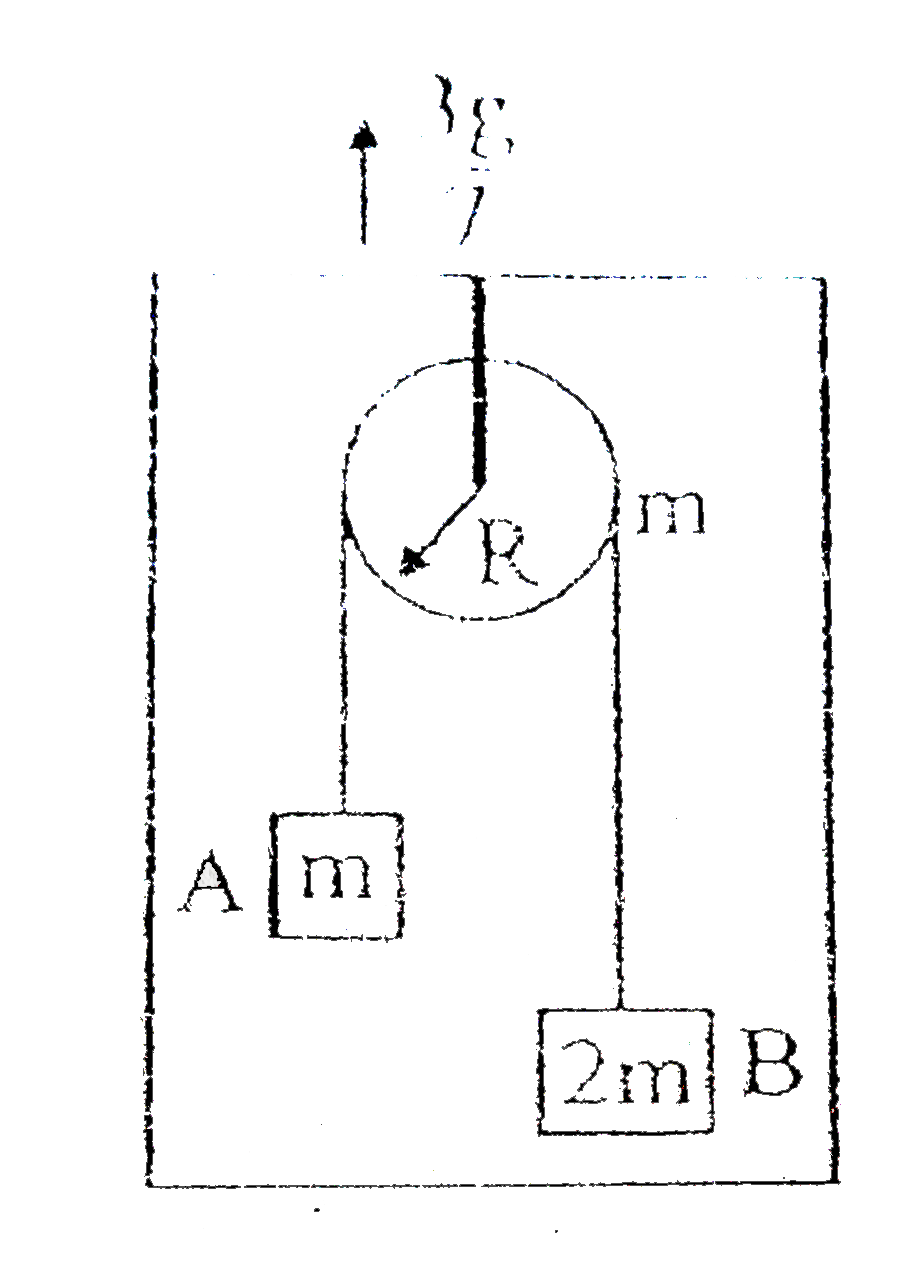 View Solution
View SolutionIn the arrangement shown in the figure the elevator is going up with an acceleration of g/10. If the pulley and the string are light and the pulley is smooth, the tension in the string AB is
 View Solution
View SolutionIn the arrangement shown in fig. pulleys are smooth and massless. Threads are massless and inextensible. Find acceleration of mass m1.
 View Solution
View Solution
